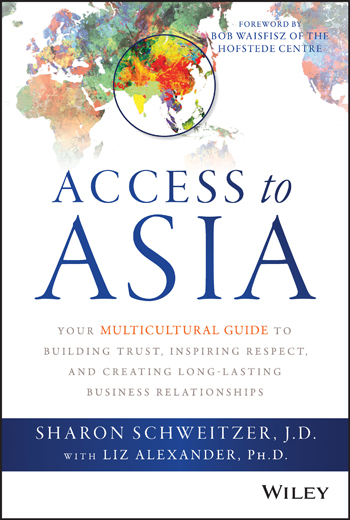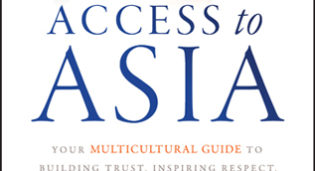Avoiding Faux Pas in Asia
Rules regarding cultural interaction are simple. So why do we stumble so often when meeting clients in Asia? Often it’s because we assume all Sinitic cultures are the same. Or fail to remember that, despite its large Chinese population, a country like Malaysia is historically Islamic. Inadvertent blunders almost always are forgiven, but they take effort to repair and can complicate sensitive negotiations.
 We all know that it’s rude to pass or offer items in South Asia with a left hand often used for personal hygiene. But what about Singapore, where the level of sanitation exceeds that found in Europe? Surely there both hands are regarded equally.
We all know that it’s rude to pass or offer items in South Asia with a left hand often used for personal hygiene. But what about Singapore, where the level of sanitation exceeds that found in Europe? Surely there both hands are regarded equally.
And then there is the issue of gift giving in China. When presenting a prospective business partner in Beijing with a present how should you wrap the item? Does white ribbon connote respect or death? What if the recipient is an oenophile? Does it matter if you give him three or four bottles of wine?
Useful guidance on these and other questions can be found in Access to Asia: Your Multicultural Guide to Building Trust, Inspiring Respect and Creating Long–Lasting Business Relationships. Written by Sharon Schweitzer, an international business consultant and founder of Protocol and Etiquette Worldwide, and business writer Liz Alexander, this 374-page book offers practical advice on doing business in nine Asian nations plus Hong Kong. Each country is accorded a chapter filled with data of the sort once published annually in almanacs, plus more nuanced information that ultimately is more valuable.
For example, I learned on first visiting Malaysia that people in the countryside don’t like seeing a white man with his arms folded across his chest. The gesture reminds them of the posture adopted by British overseers during their 139 years of colonial rule. But I never realized that foreigners walking down the street with hands in their trouser pockets also offend Malays.
Schweitzer and Alexander document the cultural peculiarities of China, Hong Kong, India, Japan, Malaysia, Myanmar, The Philippines, Singapore, South Korea, Taiwan and the United States. The most glaring omission is Indonesia, the world’s largest Islamic country with 254 million people and a GDP of $878 billion.
The target audience of Access to Asia consists of business executives about to move or make their first business trip to Asia. They should read this book on the flight over with priority given to their first port of arrival. I suggest skipping the first two chapters, which largely are filled with academic studies of low and high context cultures, and the difference between monochronic and polychronic time. Instead I would have preferred these chapters to be anecdotal stories of executives who successfully navigated Asia’s cultural shoals or gloriously crashed on the rocks of cultural misunderstanding.
Those who slog through the academic thicket will be rewarded with dozens of on-point observations that will start the reader on the road to becoming an Old Asia Hand. When it comes to bottles of wine, give three not four since four is an unlucky number. As for wrapping paper, always go with red. And remember, always use your right hand except when presenting your business card which should be presented formally with two.
Access to Asia: Your Multicultural Guide to Building Trust, Inspiring Respect and Creating Long–Lasting Business Relationships by Sharon Schweitzer and Liz Alexander, John Wiley & Sons, pp 374, ISBN 978-1-118-91901-9.


